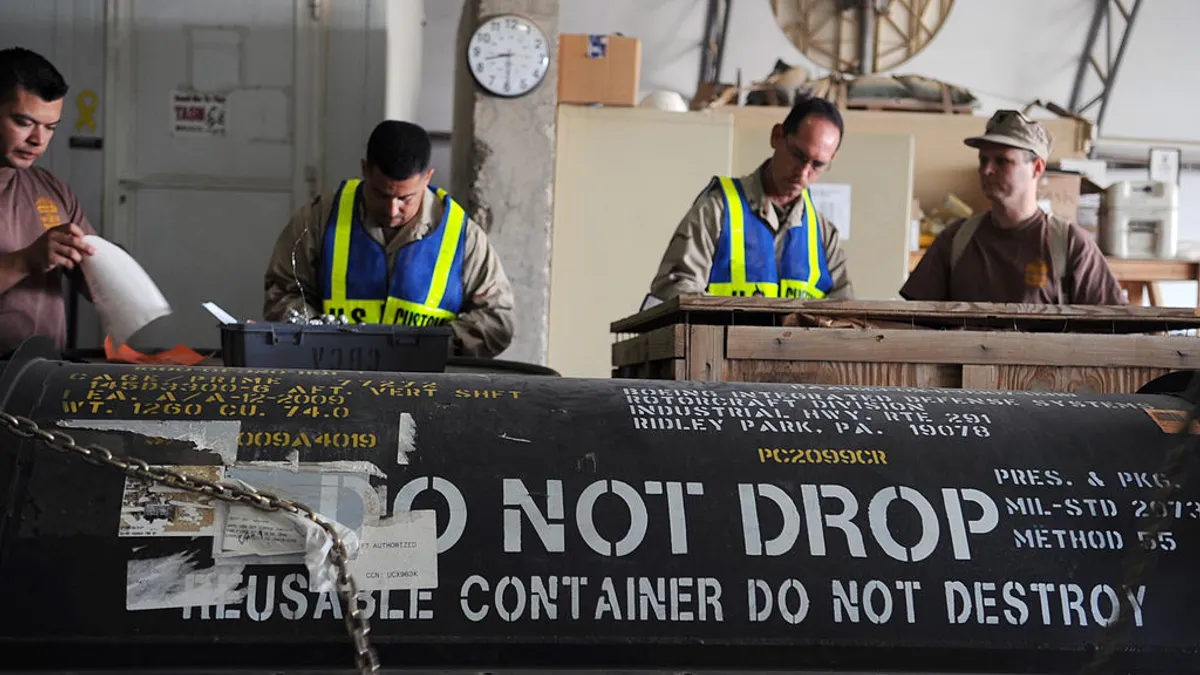Dive Brief:
- In a test conducted by the U.S. Government Accountability Office (GAO), at least 20 of 47 products sold by third party sellers online were proven to be counterfeit, according to a review of the U.S. Customs and Border Protection (CBP) and Immigration and Customs Enforcement. The seizure of counterfeit goods increased 38% between 2012 and 2016.
- Despite that disturbing statistic, the CBP has taken "limited steps" to protect intellectual property rights. According to the GAO's report, most of the counterfeit goods seized between 2012 and 2016 were shipped from China and Hong Kong, marking those two locations as high-risk for counterfeits.
- Part of the problem is a lack of sharing information. "According to private sector representatives, restrictions on CBP's information sharing limit private sector enforcement efforts," and "CBP officials said they share information to the extent allowed under current regulations."
Dive Insight:
E-commerce has accelerated supply chains but also heightened the risk of counterfeits, and now the lack of reliable data-sharing tools to oversee supply chains are pinching manufacturers.
The rising number of counterfeits not only crimps sales but also hurts a manufacturer's brand and could slow overall economic growth. Counterfeit goods sold online is reaching a state of crisis, and that only increases already heavy pressure on the CBP and ICE to crackdown on fraudulent sellers.
The GAO's study reveals how complex the problem is — there's a lack of shared data and critical information between manufacturers and law enforcement, hindering the CBP and ICE from doing their job effectively.
This is where supply chain visibility tools become so valuable: as more companies digitize and effectively track the path of goods through the supply chain and oversee the end-to-end supply chain, they can mitigate counterfeit risk. New technology, such as real-time tracking or blockchain-based ledgers, can help spot and address fake products early in the sourcing process.
Then there's the regulation piece. The CBP apparently told the GAO they share with manufacturers as much information as they can under current regulations, "but CBP has not completed an assessment of what, if any, additional information would be beneficial to share with private sector entities. Without such an assessment, CBP will not know if sharing additional information requires regulatory or legal changes," despite the fact that manufacturers interviewed by the GAO said increased data and information sharing would help them stamp out counterfeits.
At this point, there's still much research to be done just to fully understand the problem of counterfeit goods. To mitigate the risk, companies can focus on implementing visibility and data sharing tools and developing strong relationships with the CBP to accelerate and improve the crackdown process.














